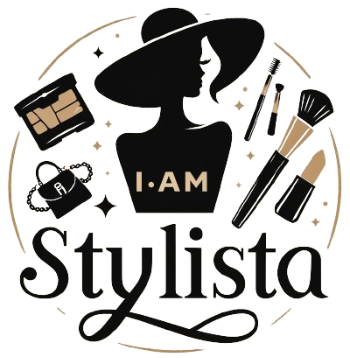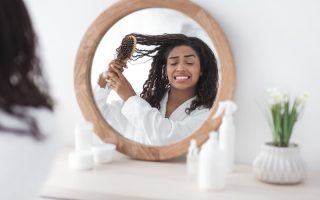Achieving your dream hair is a journey that requires dedication, patience, and a personalized approach. Every person’s hair is unique, with its own set of needs and challenges. In this article, we’ll explore how to set and achieve your hair goals, offering expert advice, personal anecdotes, and scientific insights to guide you along the way.
Understanding Your Hair Type and Needs
Jen Atkin, Celebrity Hairstylist: “Hair goals are personal, and there’s no one-size-fits-all approach. It’s about understanding your hair’s unique needs and creating a customized routine that works for you.” (Source: Ouai Haircare)
The first step to achieving your hair goals is to understand your hair type and its specific needs. Hair types can be broadly categorized into straight, wavy, curly, and coily. Each type requires different care techniques and products to look its best.
I used to struggle with my wavy hair, constantly trying to straighten it or make it curlier. Once I embraced its natural texture and learned how to care for it properly, my hair became healthier and more manageable.
Setting Realistic Hair Goals
Kristin Ess, Hairstylist and Founder of Kristin Ess Hair: “The key to achieving your hair goals is consistency and patience. It takes time for your hair to adjust to new products and treatments, so don’t give up if you don’t see results immediately.” (Source: The Zoe Report)
When setting your hair goals, it’s essential to be realistic and patient. Whether you’re aiming for longer hair, more volume, or reduced frizz, understand that significant changes won’t happen overnight. Consistency in your hair care routine is crucial.
My goal was to grow my hair long and healthy. I committed to regular trims, deep conditioning treatments, and a balanced diet. It took nearly a year to see noticeable growth and improvement, but the results were worth the wait.
Creating a Customized Hair Care Routine
Ursula Stephen, Celebrity Hairstylist: “A healthy scalp is the foundation for healthy hair. Take care of your scalp by using a gentle shampoo and conditioner, exfoliating regularly, and moisturizing as needed.” (Source: Byrdie)
A customized hair care routine is vital for achieving your hair goals. Here are some steps to consider:
- Cleansing: Use a gentle shampoo that suits your hair type. Avoid harsh sulfates that can strip your hair of its natural oils.
- Conditioning: Follow up with a conditioner that provides the right amount of moisture and protection for your hair.
- Exfoliation: Exfoliate your scalp regularly to remove dead skin cells and product buildup.
- Moisturizing: Use leave-in conditioners or hair masks to keep your hair hydrated.
- Protecting: Protect your hair from heat and environmental damage by using heat protectants and wearing hats or scarves when necessary.
I used to skip conditioning, thinking it made my hair greasy. After consulting with a hairstylist, I realized I was using the wrong type of conditioner. Switching to a lightweight, hydrating conditioner transformed my hair’s texture and health.
The Role of Diet and Lifestyle in Hair Health
Chris McMillan, Celebrity Hairstylist: “Healthy hair starts from the inside out. Eat a balanced diet, drink plenty of water, and manage your stress levels. These factors can all contribute to the health and appearance of your hair.” (Source: Chris McMillan the Salon)
Your diet and lifestyle play a significant role in the health of your hair. Nutrients such as vitamins A, C, D, E, zinc, iron, and omega-3 fatty acids are essential for hair growth and strength.
When I started incorporating more fruits, vegetables, and lean proteins into my diet, I noticed a significant improvement in my hair’s health and growth. Drinking plenty of water and reducing stress also made a big difference.
Seeking Professional Help
Harry Josh, Celebrity Hairstylist: “Don’t be afraid to seek professional help. A hairstylist can assess your hair type and concerns and recommend the best products and treatments to help you achieve your hair goals.” (Source: Harry Josh Pro Tools)
Sometimes, achieving your hair goals requires professional assistance. Regular visits to a hairstylist for trims, treatments, and personalized advice can help you stay on track.
I used to avoid going to the salon, thinking I could handle my hair on my own. After experiencing a series of bad hair days, I finally booked an appointment with a professional. The stylist provided valuable insights and treatments that significantly improved my hair’s condition.
Avoiding Common Hair Care Myths
Brad Mondo, Hair Stylist and YouTuber: “Don’t compare your hair to others. Everyone’s hair is different, and what works for one person may not work for another. Focus on your own hair goals and celebrate your unique beauty.” (Source: Brad Mondo YouTube Channel)
There are many hair care myths that can mislead you. For example, the myth that trimming your hair makes it grow faster is false. Hair grows from the scalp, and while trims prevent split ends and breakage, they don’t affect growth speed.
I used to believe that brushing my hair 100 strokes a day would make it shinier. This habit led to breakage and hair loss. Once I stopped over-brushing and focused on gentle care, my hair’s health improved.
Incorporating the Right Products
Jen Atkin: “Invest in quality hair care products that are formulated for your hair type. Avoid harsh chemicals and sulfates, which can strip your hair of its natural oils.” (Source: Ouai Haircare)
Choosing the right products for your hair type is essential. Look for shampoos, conditioners, and treatments that address your specific hair concerns, such as dryness, frizz, or lack of volume.
I used to choose hair products based on price rather than quality. After switching to sulfate-free shampoos and conditioners with natural ingredients, my hair became softer, shinier, and more manageable.
Tracking Your Progress
Brad Mondo: “Document your hair rehab journey. Take pictures and videos so you can track your progress and see how far you’ve come.” (Source: Brad Mondo YouTube Channel)
Keeping a hair diary or taking regular photos can help you monitor your progress and stay motivated. It also allows you to identify which practices and products work best for your hair.
I started taking monthly photos of my hair to track its growth and condition. Seeing the gradual improvements kept me motivated and helped me identify the most effective parts of my routine.
Embracing Your Natural Hair
Vernon François, Celebrity Hairstylist: “Embrace your natural hair texture. Learn to work with your hair’s unique characteristics, rather than trying to fight against them. This will make your hair care routine easier and more enjoyable.” (Source: Vernon François)
Learning to love and work with your natural hair texture can transform your hair care routine. Instead of trying to force your hair into styles that don’t suit it, embrace what makes your hair unique.
For years, I battled my wavy hair, trying to straighten it daily. Once I embraced my natural waves and learned how to enhance them, my hair routine became simpler, and my hair looked healthier and more vibrant.
Scientific Insights on Hair Care
- The Trichological Effects of a Cosmetic Hair Serum on Healthy Subjects: This study investigated the effects of a hair serum containing caffeine on hair growth and thickness. It found that the serum increased hair shaft diameter and improved hair quality in subjects with fine hair. (Source: International Journal of Trichology)
- The Impact of Hair Washing Frequency on Scalp and Hair Condition: This study examined the effects of different hair washing frequencies on scalp health and hair condition, concluding that daily washing can be beneficial for some hair types. (Source: International Journal of Trichology)
- The Efficacy of Hair Conditioning Products in Improving Hair Quality: This study evaluated the effectiveness of different hair conditioning products in improving hair quality and reducing damage. (Source: Journal of Cosmetic Science)
- The Impact of Diet on Hair Health: This review article discusses the role of various nutrients in hair health and highlights the importance of a balanced diet for maintaining strong and healthy hair. (Source: Dermatology Practical & Conceptual)
Conclusion: Achieving Your Hair Goals
Achieving your dream hair is a journey that involves understanding your hair’s unique needs, setting realistic goals, creating a customized routine, and embracing your natural texture. By focusing on a balanced diet, proper scalp care, and using quality products, you can transform your hair’s health and appearance.
Remember, as Kristin Ess says, “The key to achieving your hair goals is consistency and patience. It takes time for your hair to adjust to new products and treatments, so don’t give up if you don’t see results immediately.” (Source: The Zoe Report). Celebrate your progress, no matter how small, and enjoy the journey to achieving your dream hair.




